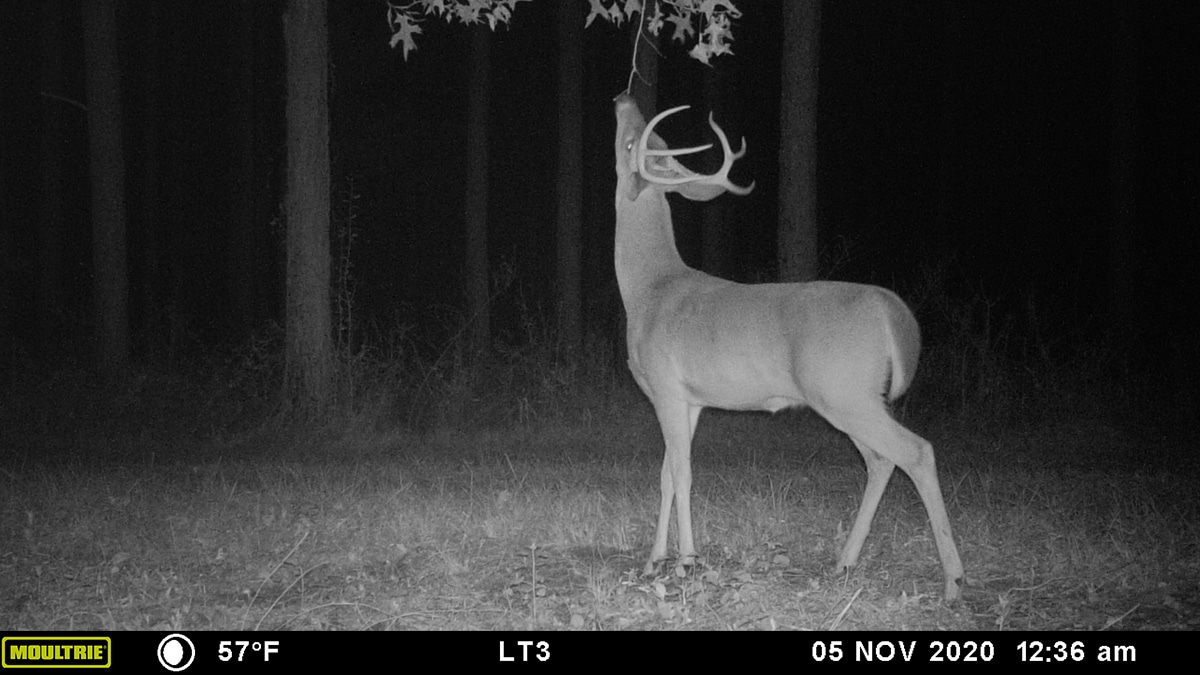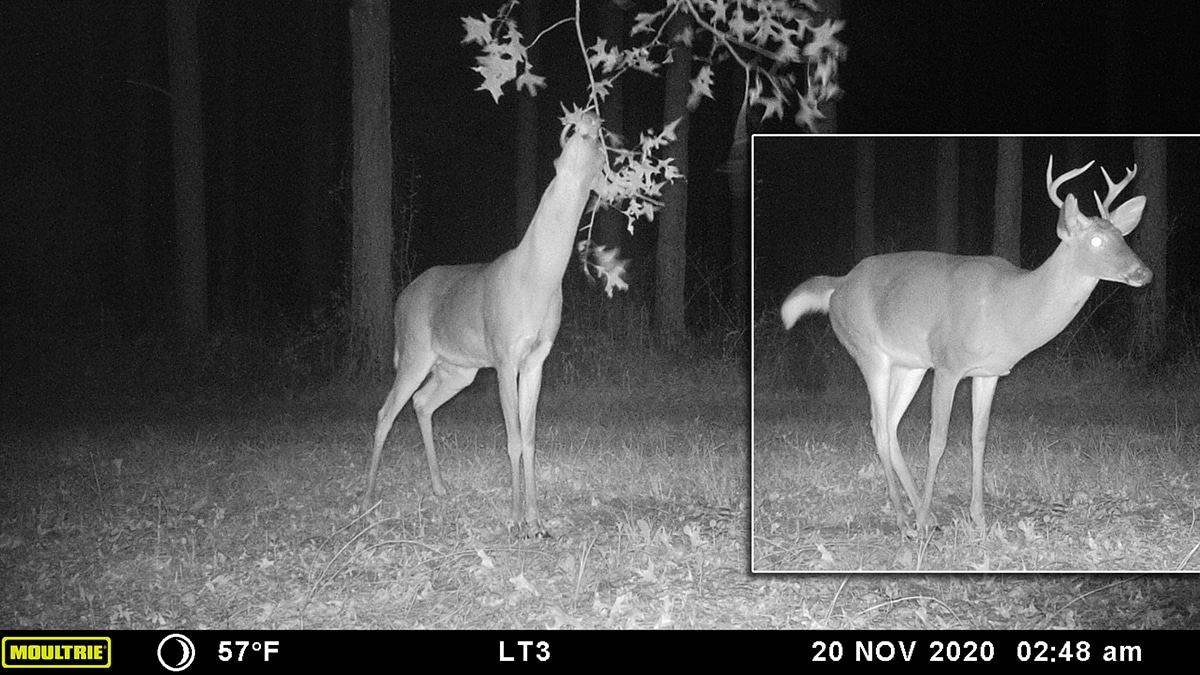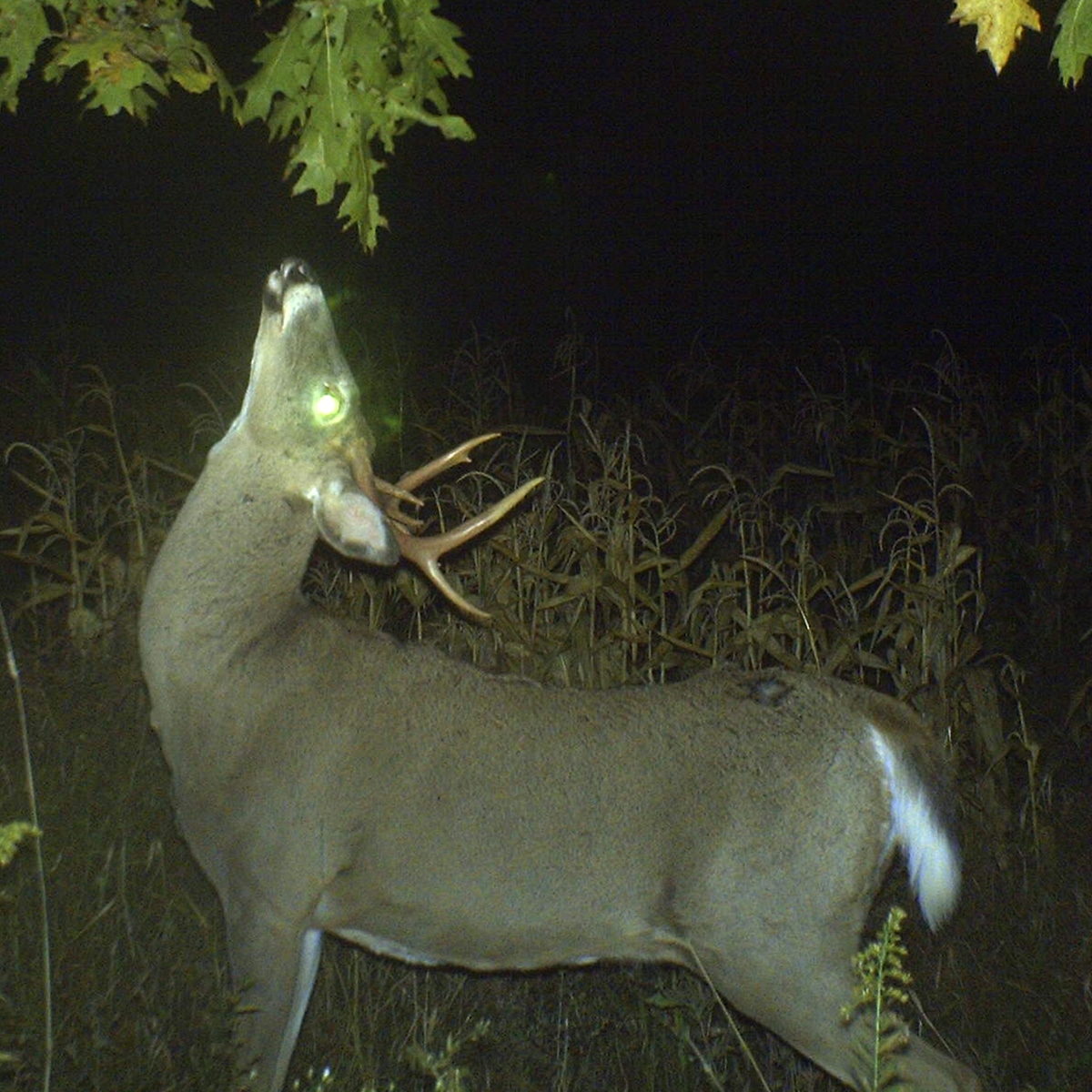
Whitetails don’t have cell phones or social media accounts, but they are far more social than most hunters realize. They surf the information highway at rubs and scrapes to stay in contact with locals as well as travelers. During the rut, rubs and scrapes are primary communication locations for deer, and scientists have learned a lot about these interesting news feeds of the deer woods.
Deer communicate with each other in many ways. They communicate with visual signals, like when they use the white on the underside of their tail, rump, and belly to lead others away from danger. They use the positions of their eyes, ears, head, body and hair to convey attitude and intent.
They communicate through touch, such as social grooming and licking. Sound is also important in deer communication, and you’re probably familiar with numerous deer vocalizations. Of course, smell is also very important, and they communicate through a highly complex olfactory system. No one knows exactly how much more sensitive a deer’s sense of smell is than ours, but every hunter knows it’s several orders of magnitude better.
Visual and scent communication play roles at rubs and scrapes.
Rubs
Rubbing by bucks occurs any time they are in hard antler, but it peaks during the pre-rut and then maintains that level throughout the breeding season. Bucks rub small and large trees, and dominant bucks may express social or physical superiority by rubbing trees or shrubs within sight of other deer. They may also rub to advertise their mate appeal to does.
Mature bucks often rub large trees, and these rubs can be special “signposts” that are revisited each year. Bucks especially enjoy rubbing fragrant species such as pine, cedar, sassafras, and red and sweet bay. In more open environments, fence posts and telephone line or electric poles can substitute for trees. It’s the odd hunter whose pulse doesn’t quicken at the site of a well-rubbed utility pole.

Many hunters think bucks rub to remove the velvet from their antlers. That is true, but there is far more involved. Bucks rub a tree and break the cambium layer. This is a visual cue to other bucks as well as does, and depending on tree species, it can be a scent cue too. Bucks then rub their forehead gland on the tree to leave specific information about themselves.
Researchers from the University of Georgia have identified nearly 50 different compounds present on mature bucks’ forehead glands that can be deposited on rubs. This allows bucks to share information on their identify and status and is why numerous bucks and does check rubs throughout the breeding season.
Scrapes
Rubs are important to deer and exciting for hunters, but they are a bottle rocket compared to the fireworks of scrapes. Scraping is also a signpost behavior, and it occurs throughout the year. Bucks and does use scrapes during any month, but their use peaks during the breeding season.
Scraping includes a sequence of behaviors that begins with a buck marking an overhanging branch. Bucks may rub their preorbital and/or forehead gland on the branch, and they often bite or chew it to leave their desired scent signal for other deer.
Next, the buck will paw away the leaf litter or vegetation immediately below the overhanging branch and create a shallow depression in the exposed soil. The scent of the exposed soil alone can attract other deer, but bucks often urinate in the pawed area.

This may be normal urination or “rub-urination” where the buck urinates while rubbing his tarsal glands together. The urine runs over his tarsal glands where some is collected, and the remainder drops into the scrape. This allows a buck to advertise at the scrape with his own unique scent and carry the scent with him (think Old Spice). In general, younger bucks urinate in scrapes without rubbing their tarsals together, especially yearling bucks. Mature bucks rub-urinate much more often, which is why dark-stained tarsal glands are one indicator of buck age.
Scrape Locations
Not every scrape visit by a deer includes all of the different behaviors. They may check the overhanging branch or scrape for scent without pawing the ground or urinating, or they may go through the entire sequence.
Scrapes can be readily found on field edges, along trails, or in the interior of woods. Scrapes are not limited to a specific area, but they are concentrated where two or more vegetation types or age classes meet. An overhanging branch in the right place and at the right height usually determines the exact location, and a scrape may reappear every year for several years in the same location as long as the tree remains and deer travel patterns stay the same.

Depending on the weather, scent deposited at scrapes can last several days, so deer may check scrapes from a distance without leaving fresh scent. Thus, many times current information is received but not shared by visiting deer. I specified deer rather than bucks because does routinely visit scrapes, and it’s not uncommon for them to urinate and leave their own personal information.
Scrapes can be hot beds of activity during the rut. One November in northern Pennsylvania, I placed a trail-camera on a fresh scrape, and over the course of 13 days it took 88 pictures and captured 20 different bucks!
You can even create “mock scrapes” that deer will then be attracted to use.
Hunting Scrapes?
Given the amount of buck activity, are scrapes the ultimate places to hunt? In most cases the answer is no. Research shows over 80% of scrape use occurs at night. That doesn’t mean you can’t use scrapes to your advantage. It just means that hunting over them is not always the best choice. Bucks often visit them just before daylight or just after dark, so setting up between scrapes and good bedding cover can be an excellent strategy to cross paths with a buck on the move.
Just like teenagers, deer surf the information highway to stay in touch with others in the neighborhood. This information on deer behavior can help you understand movement patterns and pick productive stand sites. Hopefully this can help you get a little closer to your target buck or doe this fall.








